16 Rare Antique Glassware Patterns That Are Worth a Fortune
Antique glassware is filled with patterns that are both stunning and valuable. Certain glassware patterns have stood the test of time, becoming highly prized by collectors. These rare pieces often hold significant historical value and are known for their exceptional quality. Understanding which glassware patterns are worth the most can help you make the most of your collection. Join us as we dive into some of the most sought-after antique glassware patterns.
This post may contain affiliate links, which helps keep this content free. Please read our disclosure for more info.
Brilliant Cut Glass
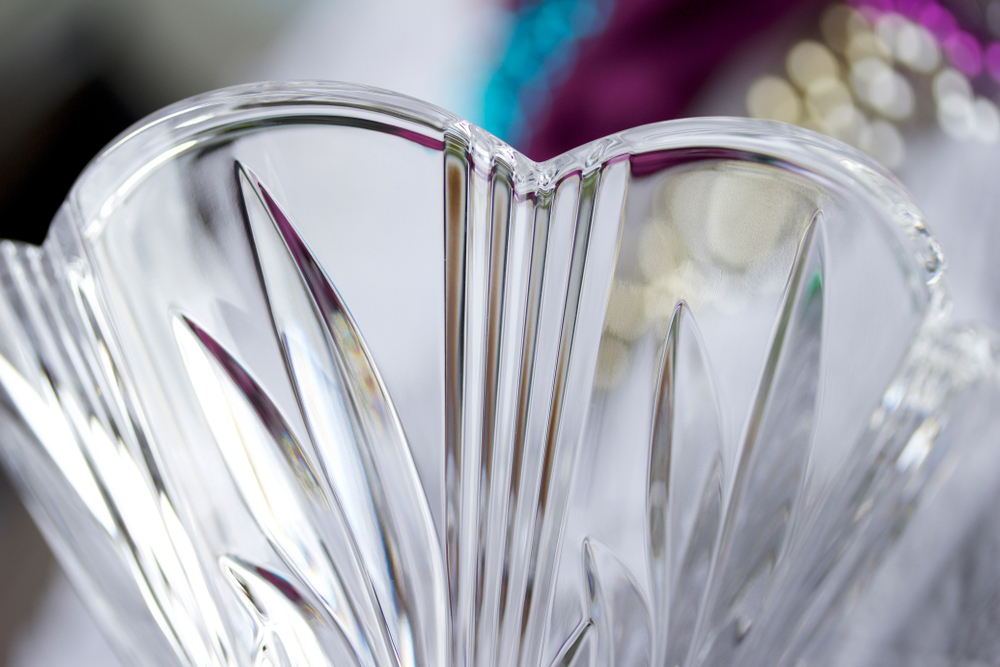
Brilliant Cut Glass was produced in the United States during the late 19th and early 20th centuries. This glassware is known for its deep, intricate cuts and sparkling clarity, often featuring geometric shapes and patterns. When first released, pieces of Brilliant Cut Glass were considered luxury items, with prices ranging from $10 to $50, which was expensive at the time. Today, depending on the pattern and condition, Brilliant Cut Glass can sell for anywhere from $200 to $5,000.
This glassware was primarily made by companies such as Boston and Sandwich Glass and American Cut Glass. The intricate cutting process made each piece labor-intensive, and its beauty made it a symbol of wealth and sophistication. Items like cut glass decanters, bowls, and pitchers are especially valued today. Collectors are always on the lookout for rare patterns and well-preserved pieces, as they can fetch a high price at auction.
Heisey Colonial Glass
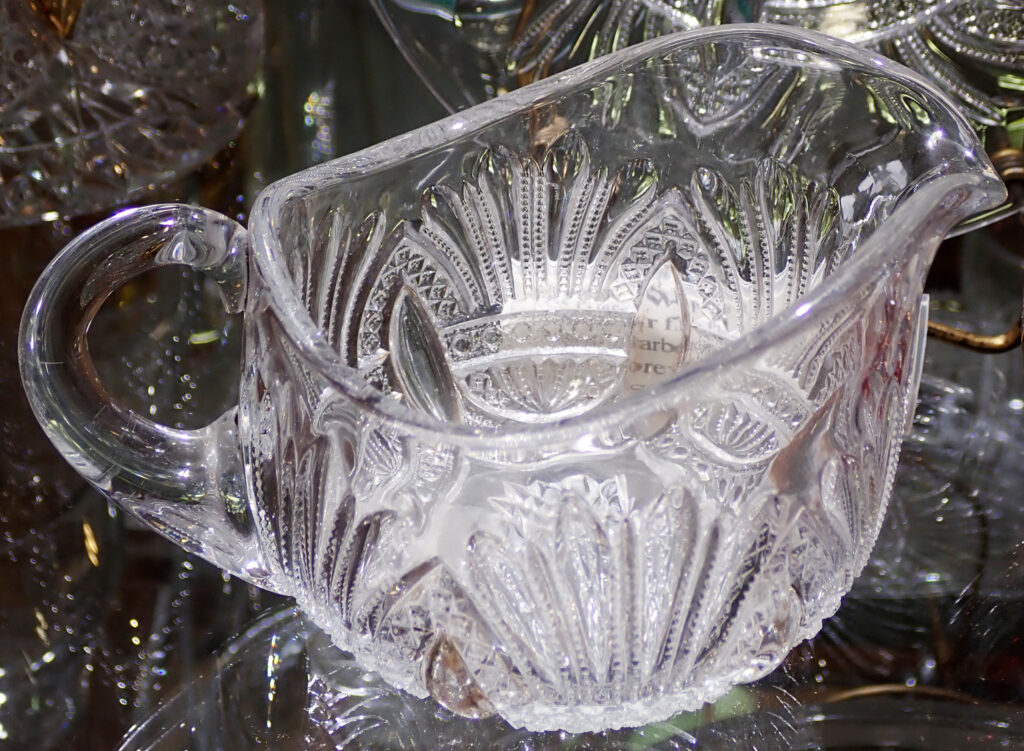
Heisey Colonial Glass was produced by the Heisey Glass Company from 1920 to the early 1950s. The pattern features a classic, elegant design with an emphasis on symmetry and simple lines. When first sold, Colonial Glass was priced affordably, with pieces ranging from $1 to $15. Today, depending on the piece and condition, Colonial Glass can be valued anywhere from $50 to $2,000.
Heisey’s Colonial Glass pattern is often characterized by its high-quality craftsmanship and durability. Known for its use of lead crystal and thick glass, this pattern has become a staple in antique glassware collections. Pieces like serving bowls, vases, and stemware are the most sought after, especially when they are free from chips or cracks. The clean lines and timeless appeal of Heisey Colonial Glass continue to make it a collector’s favorite.
Carnival Glass

Carnival Glass, produced from the early 1900s to the 1930s, is known for its vibrant, iridescent finish and intricate patterns. This glassware is famous for its rich colors, including amber, purple, and green, and for its glass that changes color when exposed to light. Originally, Carnival Glass was sold cheaply, with prices ranging from $0.25 to $3 per piece. Today, the value of rare patterns like Marigold or Blue Trees can reach as much as $1,000 to $10,000.
The glassware was produced by various companies, including the Fenton Art Glass Company and the Imperial Glass Company. The iridescence was created by adding metallic salts during the manufacturing process, which was a new technique at the time. Carnival Glass is still popular among collectors, especially pieces in excellent condition or those with sought-after patterns. Its colorful nature and nostalgic appeal continue to drive demand and keep prices high.
Steuben Glass Aurene
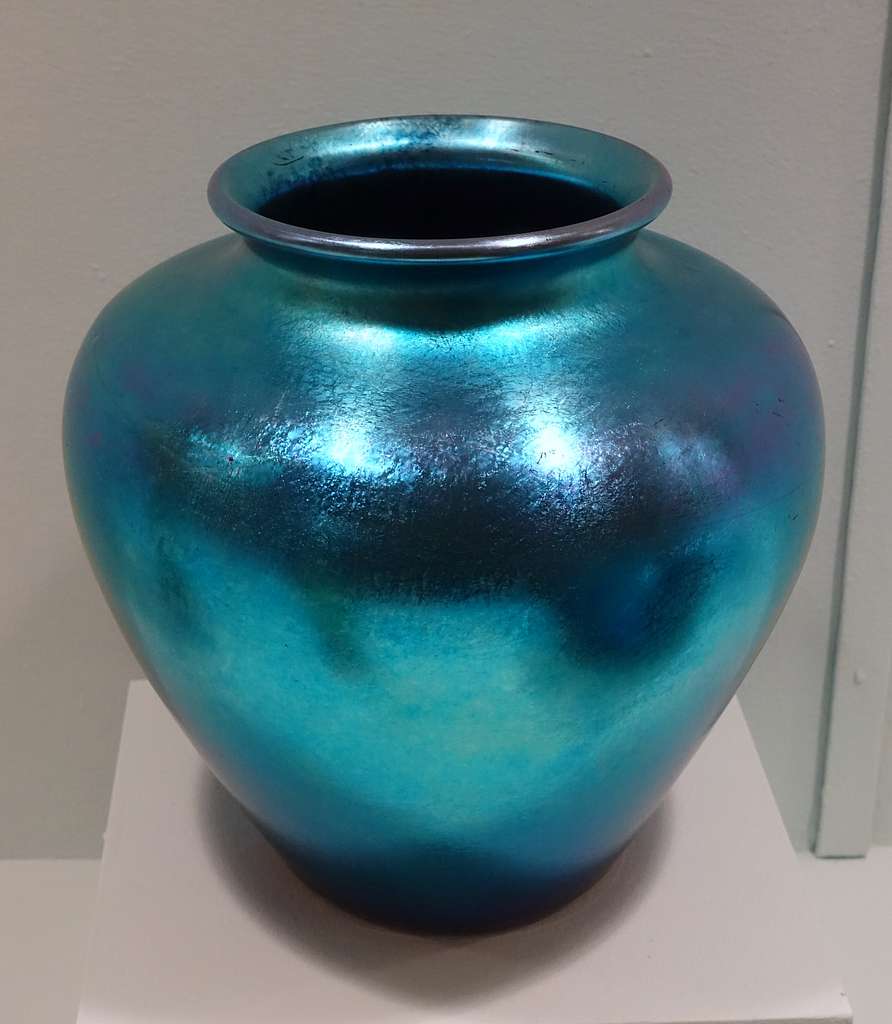
Steuben Glass Aurene was produced by the Steuben Glass Works in the early 20th century, with the pattern being introduced in 1904. Aurene glass is known for its soft, iridescent finish that shimmers in various colors, particularly gold and green. When first released, Steuben’s Aurene glassware was sold at a premium, with prices ranging from $10 to $50 for smaller pieces. Today, rare and exceptional pieces can be worth between $500 and $15,000, depending on their design and condition.
Aurene was one of Steuben’s most innovative creations, showcasing the company’s mastery in glassmaking. The iridescent quality was achieved through a special treatment process that involved adding metallic salts to the glass. Some of the most valuable pieces include vases, bowls, and pitchers, with patterns like Aurene Blue being particularly desirable. Collectors prize these pieces for their beauty and historical value.
Boston and Sandwich Glass Crescent
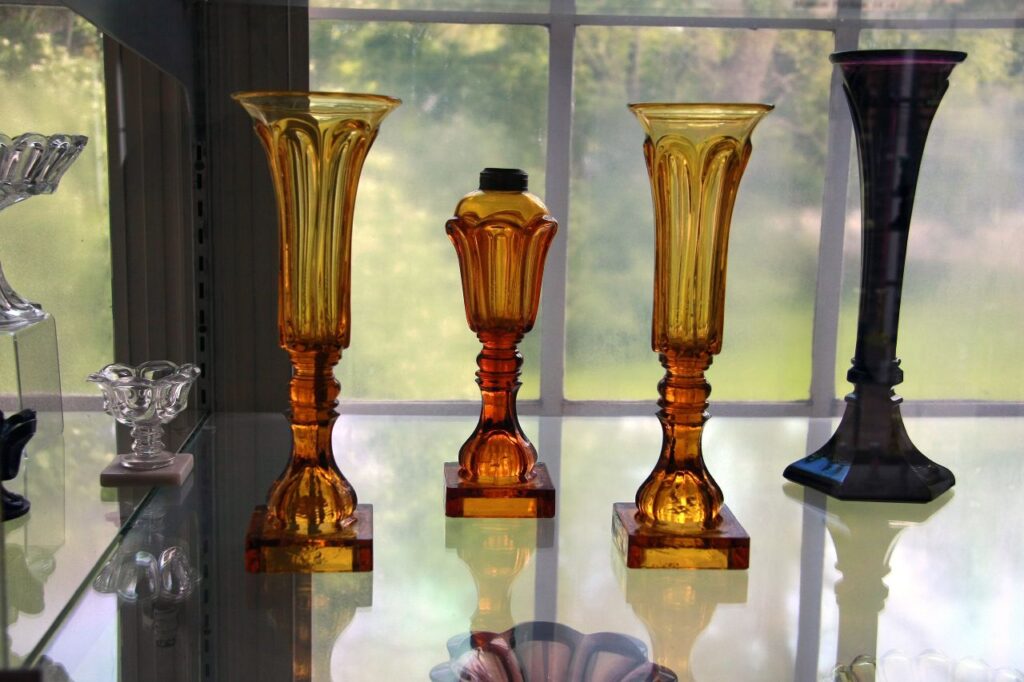
Boston and Sandwich Glass was produced by the Boston and Sandwich Glass Company from 1825 to 1888, and the Crescent pattern is one of its most recognizable designs. The pattern features a series of crescent-shaped indentations that create a striking visual effect on the glass. Initially, this glassware was sold at a modest price, ranging from $3 to $10 per piece. Today, the value of Boston and Sandwich Glass Crescent items can range from $200 to $5,000, with rare examples commanding even higher prices.
This glassware is known for its high-quality, clear glass and distinctive design. Pieces such as pitchers, bowls, and candlesticks are the most sought after by collectors. The intricate patterns and historical significance of Boston and Sandwich Glass continue to make it a highly valued pattern. For collectors, finding an intact piece of Crescent glass in good condition is a rare and exciting find.
Murano Glass Latticino
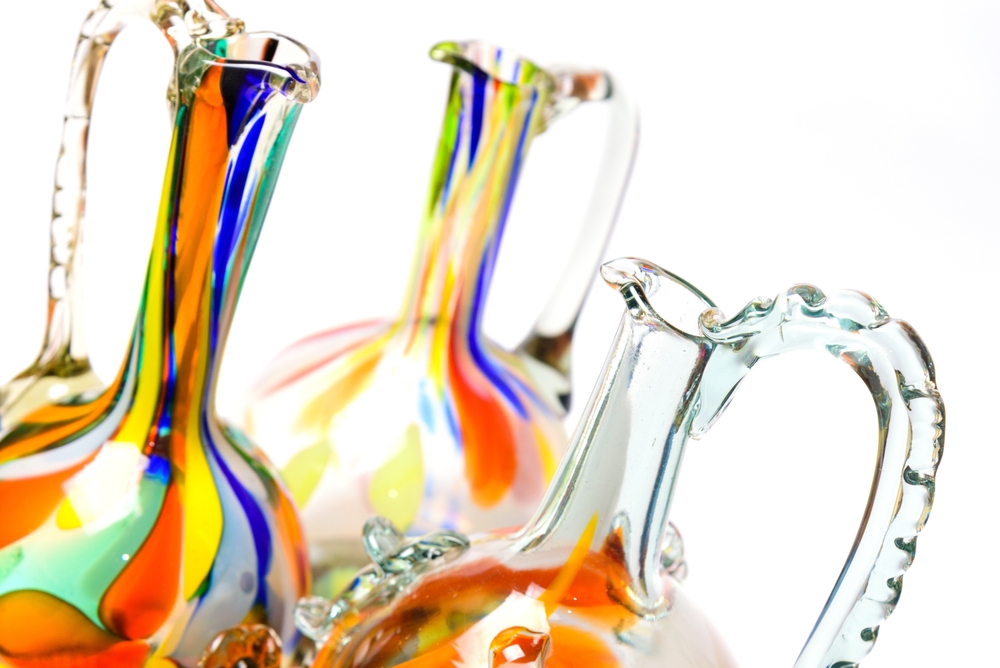
Murano Glass Latticino is a style produced on the island of Murano in Italy, dating back to the 16th century, though it gained popularity in the 19th century. The Latticino pattern features delicate, thread-like lines of glass woven into a complex design, creating a stunning visual effect. Initially, Murano glass was considered luxury glass and sold for high prices, ranging from $20 to $100 for smaller pieces. Today, Latticino glassware can be worth anywhere from $500 to $8,000, with rare, vintage pieces fetching even more.
Murano Glass is famous for its hand-blown techniques and beautiful patterns, and Latticino is among the most iconic. The process of making this intricate glass involves winding glass threads into the form of a net, creating unique patterns. Today, collectors seek out Murano glass vases, bowls, and decorative pieces that feature the Latticino design. The craftsmanship and rich history of Murano glass make it a prized possession among collectors.
Bohemian Glass Ruby Red
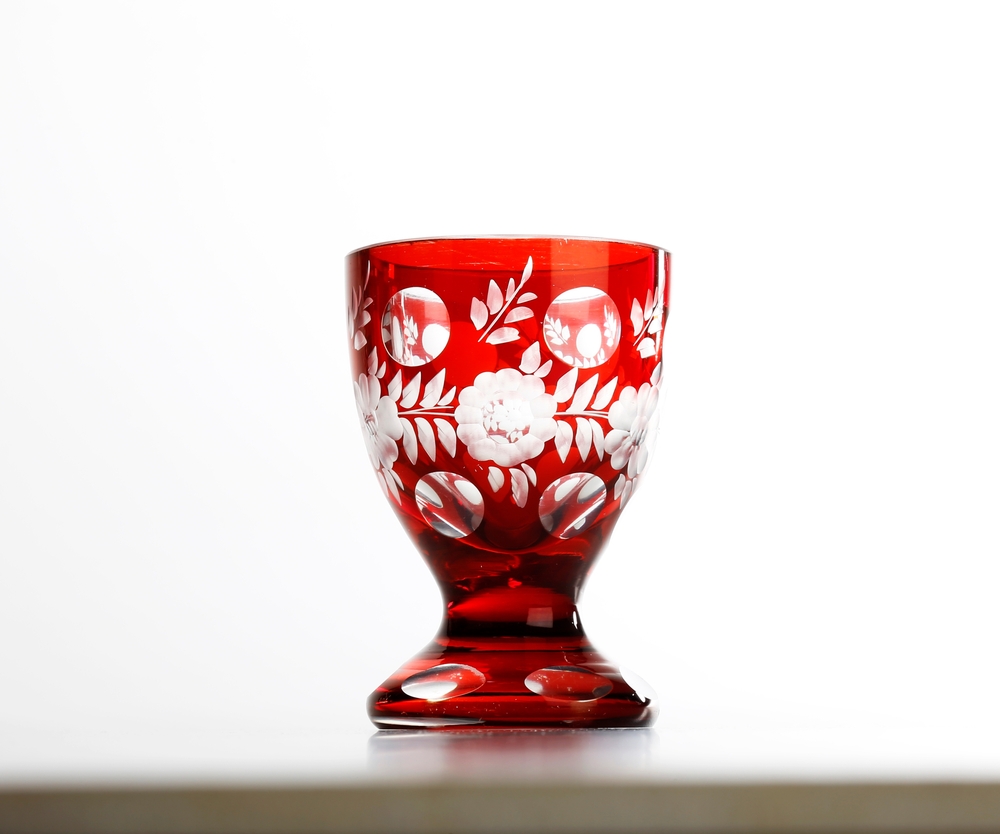
Bohemian Glass, produced in the Czech Republic, is well-known for its quality and craftsmanship. The Ruby Red pattern, introduced in the 19th century, features a rich red color with gold and enamel accents. Originally, this glassware was sold as fine dining sets, priced at around $10 per piece. Today, the value of Bohemian Glass Ruby Red can range from $150 to $4,000, depending on the piece and its condition.
Bohemian glassmakers are renowned for their use of vibrant colors and detailed hand-etching, and Ruby Red glass is among their most striking works. The deep red color, combined with intricate gold designs, makes this pattern highly desirable. Rare items such as decanters, wine glasses, and large vases are particularly sought after. The elegance and historical appeal of this glass continue to make it a valuable addition to any collection.
Mary Gregory Glass
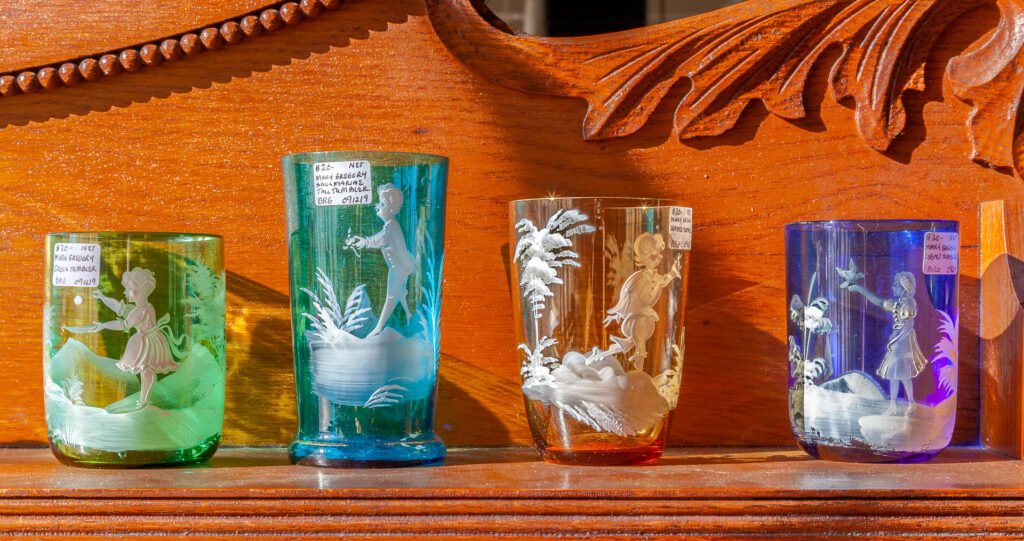
Mary Gregory glassware was produced in the United States during the late 19th and early 20th centuries. This glassware is easily recognized for its white enamel painting of children, animals, or other scenes, often in a frosted white design. When it was first introduced, Mary Gregory pieces were affordable, typically priced between $5 and $20. Today, these glassware pieces can range from $100 to $3,000, with certain rare pieces being valued at even higher prices.
The style was named after Mary Gregory, an artist who painted these designs onto glassware, and it quickly became popular due to its charming and whimsical imagery. The glass itself is often in shades of blue, green, or clear, providing a perfect background for the white enamel artwork. Collectors are particularly fond of the large vases and pitchers, as well as any piece in mint condition. The distinct design and historical significance continue to make Mary Gregory glass highly collectible.
Depression Glass Clear
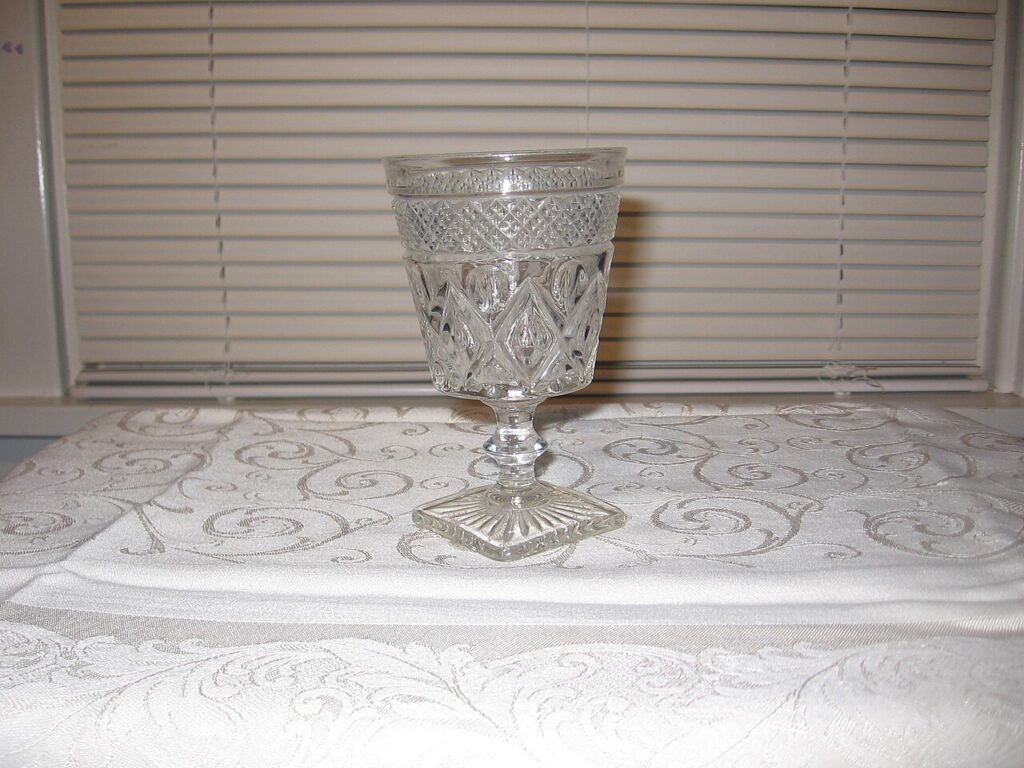
Depression Glass was produced during the Great Depression era in the 1930s, with the Clear pattern being one of the most popular. This glassware features simple, yet elegant designs, often with geometric or floral patterns. When originally released, Depression Glass pieces were inexpensive, priced as low as $1 to $3 per item, as they were mass-produced for everyday use. Today, Depression Glass Clear pieces can range from $30 to $1,000, with rare designs or unblemished sets selling for even higher prices.
The glass is typically lightweight and made in pale, transparent hues, with some pieces featuring intricate embossed patterns. It was often given away as promotional items during the Depression, which is part of what makes it so highly collectible today. Some of the most sought-after pieces include bowls, plates, and serving trays. The vintage charm of Depression Glass continues to make it a popular option for collectors.
EAPG Glass Queensware
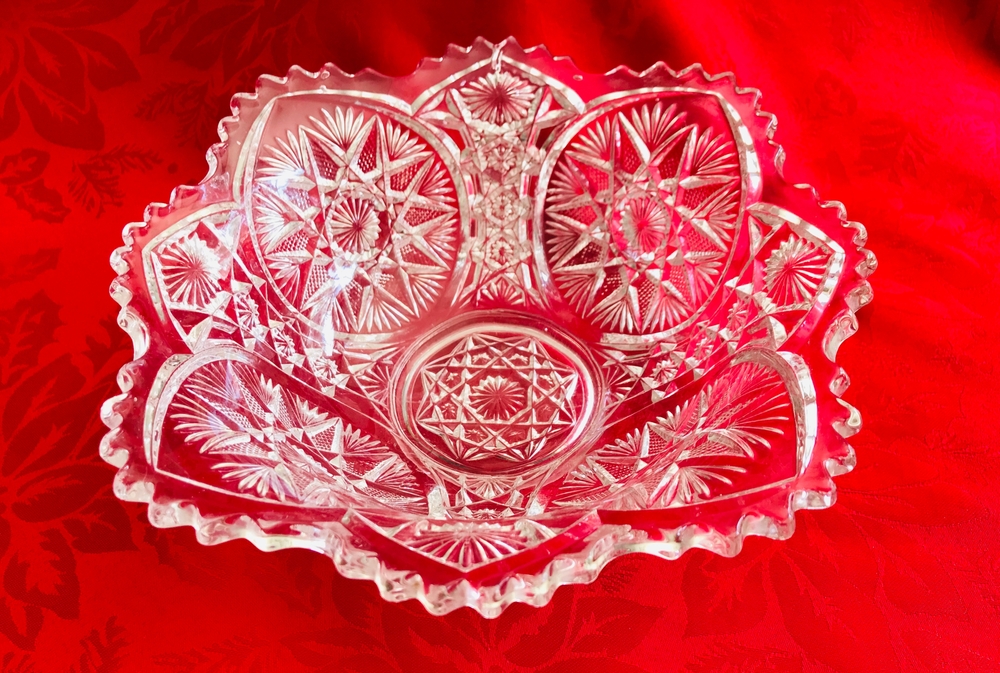
EAPG (Early American Pressed Glass) Queensware is a pattern that was produced from the mid-19th century through the early 20th century. This pattern features elegant yet simple designs, often embossed with floral motifs. When first released, the pieces were sold for around $1 to $5, making it affordable at the time for everyday use. Today, Queensware glass can be valued anywhere from $100 to $3,000, depending on the rarity and condition of the piece.
Queensware was often used in home settings, with pitchers, bowls, and goblets being the most common items produced. The design was popular for its versatility, fitting into both formal and casual settings. The historical nature of these pieces, combined with their durability, makes them highly collectible today. Finding well-preserved examples of Queensware glass is rare, adding to the appeal and value of these items.
Art Deco Glassware Frosted
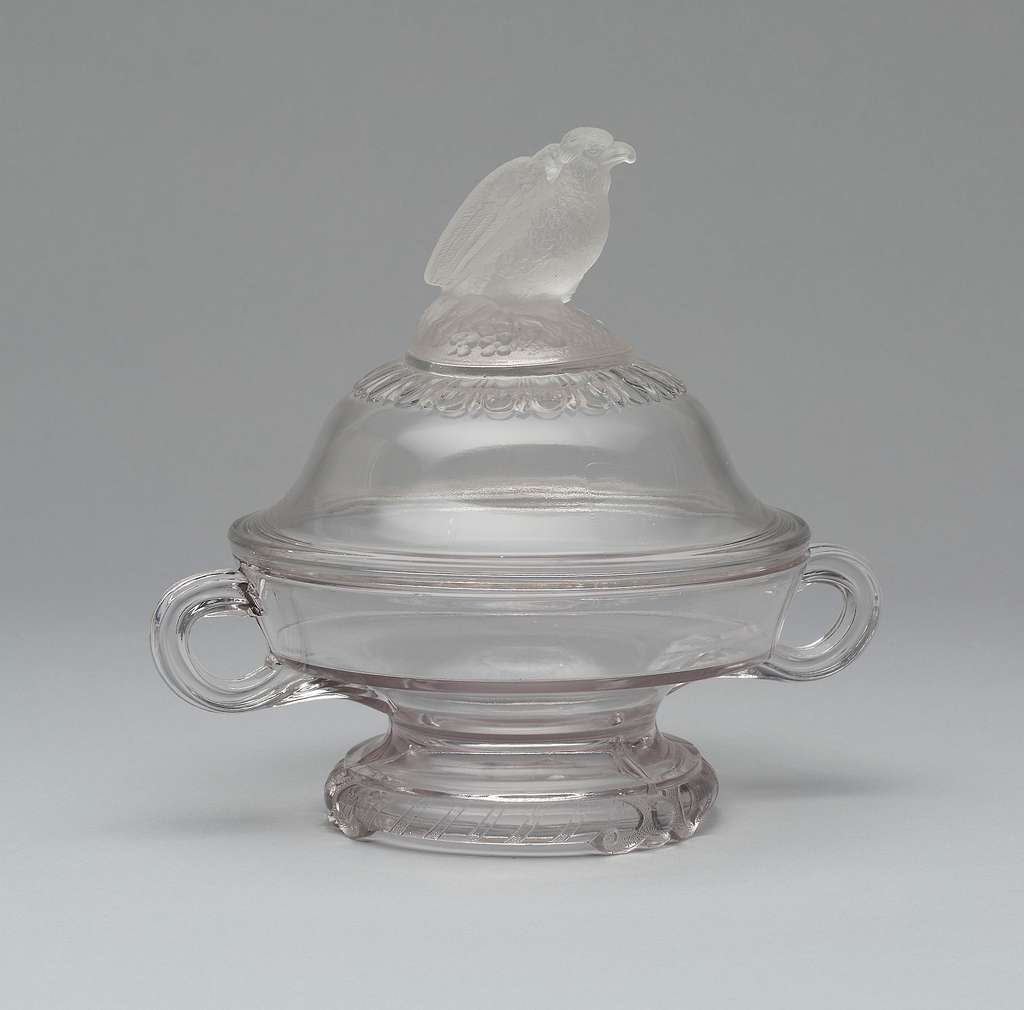
Art Deco Frosted glassware became popular in the 1920s and 1930s, known for its sleek, geometric patterns and frosted finish. This style features bold designs with smooth, frosted glass, often combined with clear glass accents. When first released, these pieces were sold as luxury items, with prices varying between $10 and $50 per piece. Today, Art Deco Frosted glassware can be worth between $200 and $10,000, depending on the condition, rarity, and specific design.
Art Deco glassware is especially sought after due to its association with the glamorous, modernist aesthetic of the early 20th century. Popular items in this pattern include vases, cocktail glasses, and serving trays. Collectors prize the rarity of these items, especially those in mint condition or those featuring unusual designs. The distinct style and elegance continue to make this glassware highly desirable and valuable.
Murano Glass Vetri
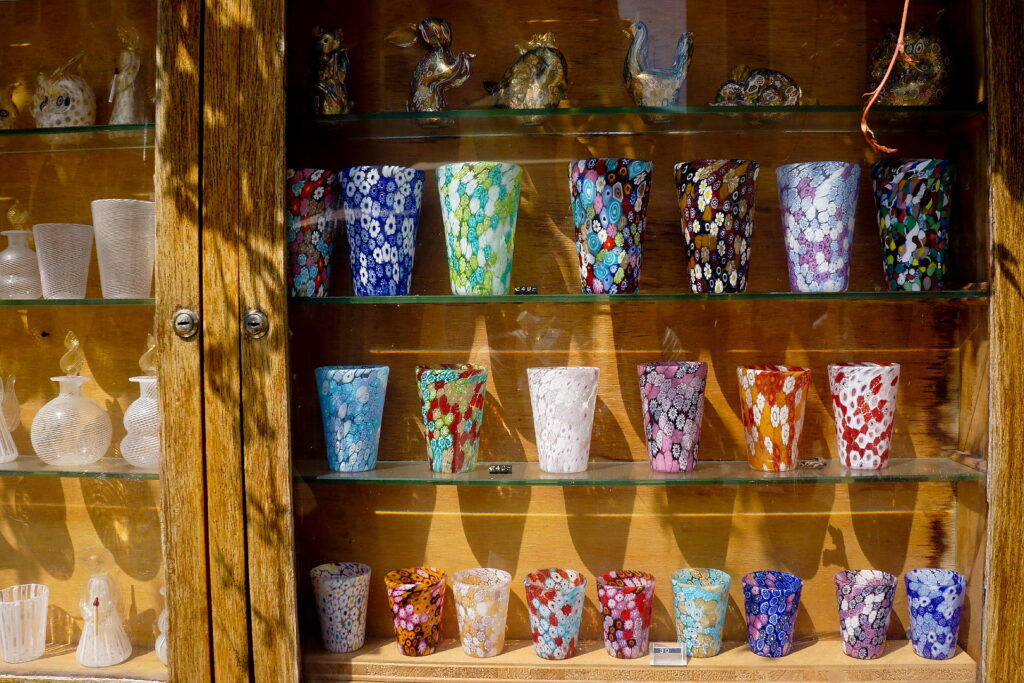
Murano Glass Vetri is an Italian glassware that has been produced since the 13th century on the island of Murano, Italy. The Vetri pattern is famous for its vibrant colors and intricate hand-blown designs. Originally, Murano glass was sold at high prices, with individual pieces reaching anywhere from $50 to $200. Today, Murano Glass Vetri can range in price from $500 to $20,000, depending on the intricacy of the design and the age of the piece.
Murano Glass Vetri is known for its fine craftsmanship, as each piece is individually hand-blown and often includes gold leaf or other fine materials. The patterns can vary greatly, but they are always distinctive and colorful, making them perfect for collectors. Rare or limited-edition pieces from renowned glassmakers in Murano can fetch incredible prices at auctions. Murano Glass continues to be a sought-after collectible due to its history, beauty, and craftsmanship.
Fenton Glass Hobnail
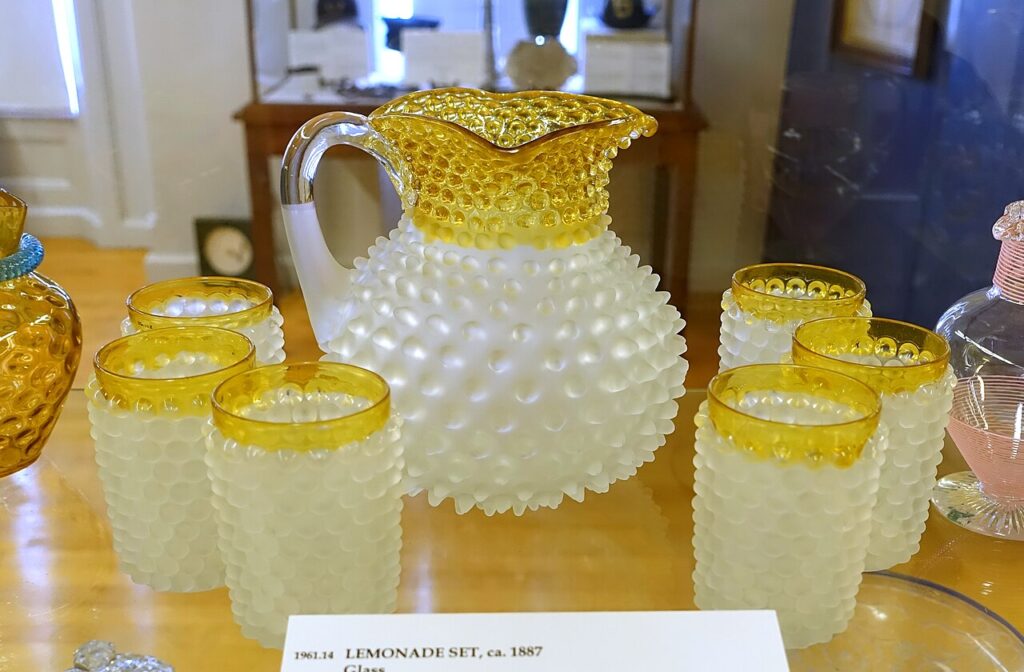
Fenton Glass, established in 1905, became well-known for its vibrant colors and unique textures, with the Hobnail pattern being one of its most iconic designs. The Hobnail pattern features small, raised bumps across the surface of the glass, creating a unique texture and shine. When first sold, these pieces were priced between $5 and $15, making them affordable for most consumers. Today, Fenton Glass Hobnail can sell for anywhere from $50 to $2,000, with rare colors or flawless pieces fetching much higher prices.
The Hobnail design is often seen in items like vases, lamps, and bowls, with a variety of colors, including clear, milk, and cobalt blue. The texture of Hobnail glass not only adds visual appeal but also enhances the light reflections, making it a favorite among collectors. Fenton’s use of vibrant glass and creative designs ensures that these pieces remain highly sought after. Whether you are a new collector or a seasoned enthusiast, Hobnail glass continues to hold a significant place in antique glassware collections.
Westmoreland Glass Paneled Grape
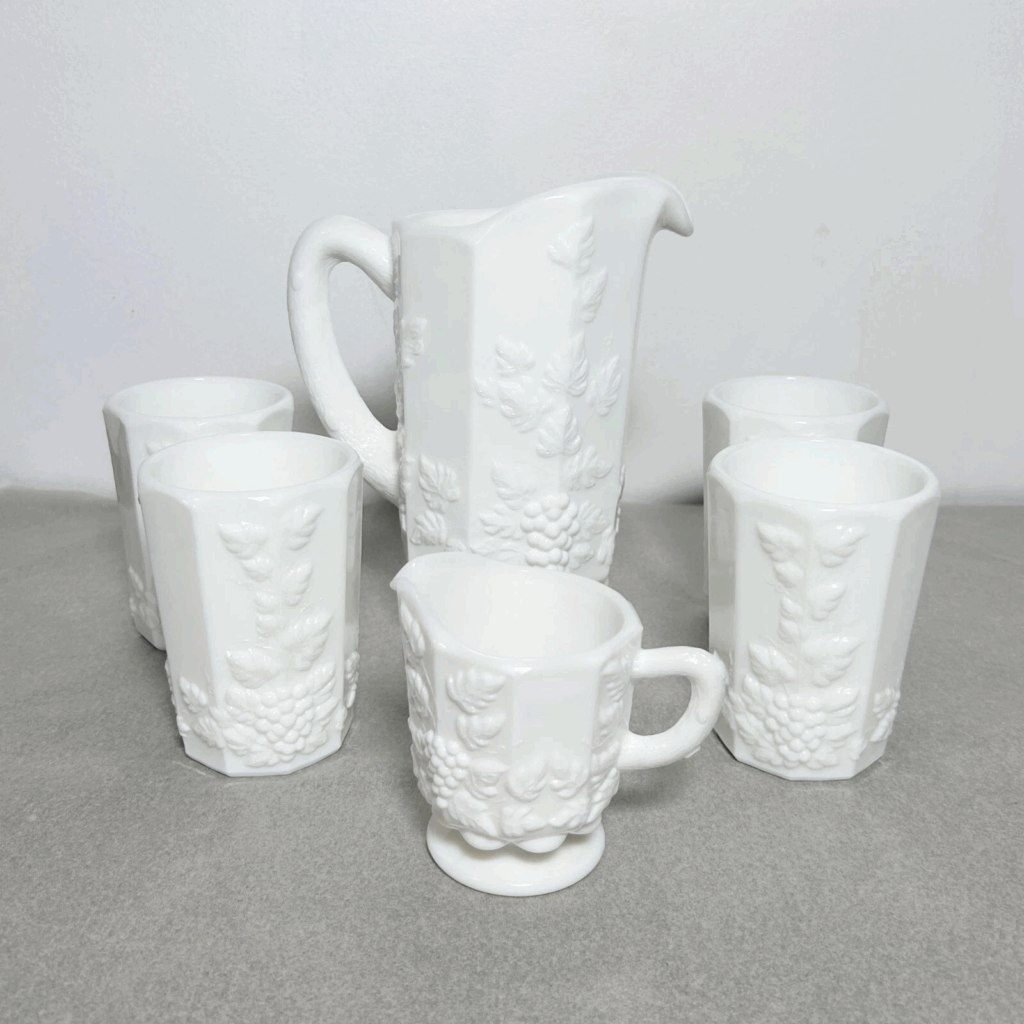
Westmoreland Glass Company, founded in 1889, is known for producing high-quality pressed glass, and the Paneled Grape pattern is one of its most popular designs. The pattern features clusters of grapes and vines embossed on glass panels, giving the pieces a detailed and textured look. When first produced, Paneled Grape glassware was relatively affordable, with pieces priced between $5 and $20. Today, prices for Paneled Grape glassware can range from $50 to $1,000, with rare pieces, particularly those in milk glass, reaching even higher values.
Paneled Grape glass was produced in several colors, including milk glass, clear, and amber, and is known for its intricate detailing. Popular items include bowls, serving dishes, and cake plates, with mint condition pieces being the most valuable. The pattern’s timeless appeal and durability continue to make it a favorite among antique glassware collectors. With its rich history and decorative charm, Paneled Grape remains a sought-after item at auctions and antique stores.
Baccarat Crystal Harcourt

Baccarat’s Harcourt pattern, first introduced in 1841, is considered one of the most iconic crystal designs. Known for its elegant simplicity and brilliant clarity, the Harcourt pattern is often characterized by geometric shapes and sharp angles. When first introduced, Baccarat crystal was sold at premium prices, with each glass costing around $30 to $50. Today, Baccarat Harcourt crystal pieces can fetch prices ranging from $300 to $5,000, depending on the piece’s size and condition.
Baccarat glassware is known for its superior quality and craftsmanship, with the Harcourt design being a perfect example of the company’s commitment to excellence. The crystal’s clarity and weight give each piece an unmatched elegance, making it a favorite for formal occasions. Today, Baccarat crystal is still produced, but original Harcourt pieces remain highly valuable, especially when they are rare or in excellent condition. Collectors continue to seek out this luxurious glassware for its timeless beauty and history.
Tiffany and Co. Favrile Glass
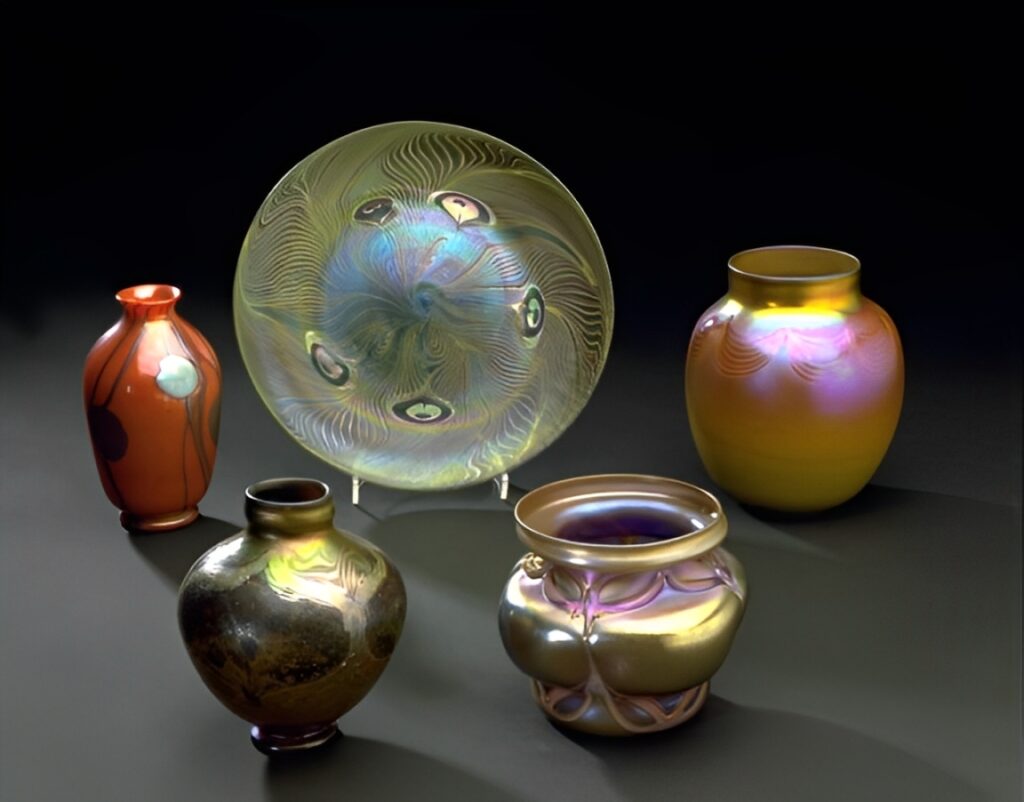
Tiffany and Co.’s Favrile glass, introduced in the 1890s, is renowned for its rich, iridescent finish and artistic designs. Favrile glass is unique due to its handmade nature, where each piece is crafted to have a distinct appearance. When it was first produced, these pieces were sold for anywhere from $50 to $200, making them a luxury item. Today, Tiffany and Co. Favrile glass can sell for $1,000 to $50,000, depending on the rarity and condition of the piece.
Favrile glass is highly valued for its quality and distinctive look, with colors like gold, amber, and green being the most sought after. Tiffany’s glassblowers used a special technique to achieve the iridescent effect, creating pieces that were unlike anything else at the time. The company’s collaboration with renowned artists made the Favrile collection even more desirable. Collectors continue to seek out Tiffany and Co. Favrile glass for its historical significance, craftsmanship, and enduring beauty.
Rare antique glassware offers a glimpse into the past, showcasing craftsmanship and designs that have withstood the test of time. Each piece tells a story, making it a valuable addition to any collection. From intricate patterns to iridescent finishes, these glassware items are not just beautiful, but also great investments.
This article originally appeared on Avocadu.
